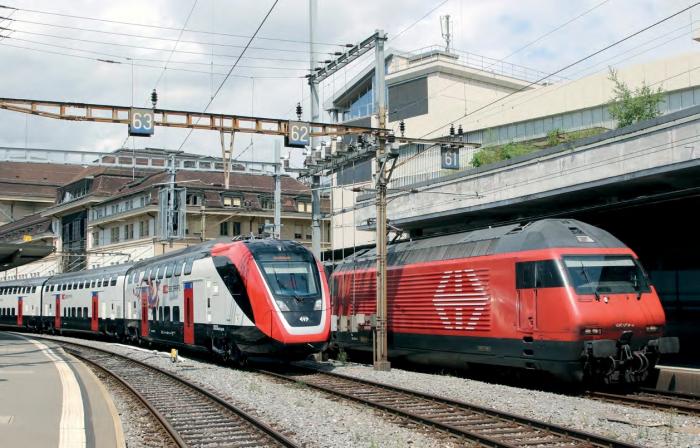
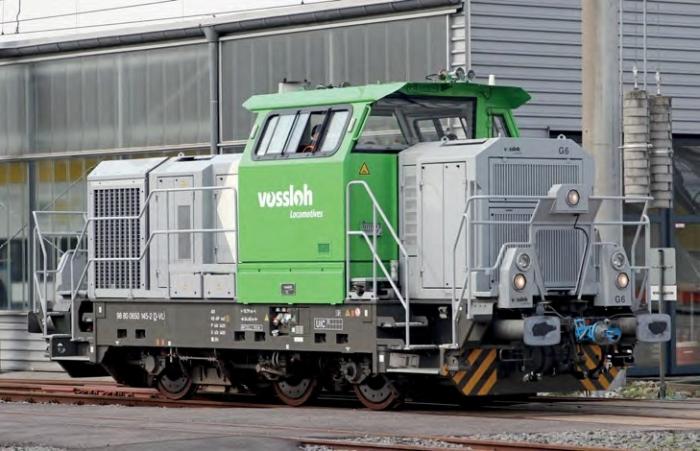
EUROPE

CRRC BUYS EUROPEAN MANUFACTURER
German manufacturer Vossloh announced at the end of August that it has agreed to sell its Kiel-based Vossloh Locomotives business to Chinese rail engineering giant China Railway Rolling Stock Corporation Ltd (CRRC). The business has been for sale for several years after Vossloh announced in 2014 that it would divest itself of all the rolling stock businesses it had previously acquired. It sold its Valencia-based locomotive and rolling stock business to Stadler in 2015 and the Vossloh Kiepe electric traction business to Knorr-Bremse in 2017.
CRRC subsidiary CRRC Zhuzhou Locomotive Co Ltd (CRRC ZELC) is buying Vossloh Locomotives. The exact purchase price has not been disclosed but according to Vossloh is expected to be under €10 million. The price is subject to upward adjustment by a similar additional amount depending on future sales of assets by CRRC.
Vossloh has substantial sales in China, especially for infrastructure components used in the growing high-speed rail network and has recently expanded its joint ventures there with Chinese partner companies. Overall, Vossloh expects an additional negative impact on its 2019 results of €30 to €35 million from the now sold Vossloh Locomotives business.
NEW FACTORY BUILT BEFORE SALE
Based in Kiel in northern Germany, Vossloh Locomotives was once the significant loco builder Maschinenbau Kiel (MaK), later sold by Krupp to Siemens before Vossloh bought it in 1998. Vossloh has invested heavily in the company, building a new rail-connected factory at a cost of €30 million, which opened in January 2018. Vossloh had previously said it was doing this to make the locomotive business viable long-term; the old MaK site did not allow production under one roof and led to low operating efficiencies.
Whilst the site and its facilities may have contributed to losses (€25 million in the first half of 2019), the fact the business only built diesel-powered shunting/trip locos did not help as demand for these from rail operators and industrial users has declined considerably and several alternative manufacturers exist in neighbouring lower cost eastern European countries. In recent years Vossloh simplified the product range to just diesel-electric locos, no longer offering diesel-hydraulics, which had long been the staple output of the old MaK.
For CRRC the purchase marks its first serious entry into the European rail equipment market. CRRC subsidiaries have previously looked at acquisitions in Europe and in 2018 were named as bidders for German wagon builder Waggonbau Niesky, although Slovak firm Tatravagónka ultimately bought the firm. CRRC has been expanding outside Asia for some time and has built two subway (metro) car assembly plants in the USA, although the import of components and part-completed vehicles is now being questioned by many American politicians in the context of the wider USA/China trade dispute.
CRRC has supplied diesel-hybrid shunting locos to DB Netze for use on the Hamburg S-Bahn and electric locos to Serbia and North Macedonia, plus freight rolling stock to several EU customers including Network Rail, all built in China; in future CRRC will be able to offer European-built rolling stock to European customers. The proposed acquisition is subject to approvals in both China and Europe. European rail engineering trade body UNIFE issued a statement saying the proposed acquisition ‘confirmed China’s strategy to enter and conquer the European rail market’ and called on the European Union to ensure trade in the rail sector was more balanced, noting that the parts of the Chinese market accessible to EU manufacturers had fallen from 63% to 18% in eight years.
UNIFE is demanding the EU reaches an agreement with the Chinese government giving wider access to Chinese markets for European companies by 2020. UNIFE called for EU action to remove the distorting effect of non-EU state owned firms operating within the EU single market, pointing out that the Chinese Government has prioritised ‘advanced railway transportation equipment’ as one of 10 priority sectors in its ‘Made in China 2025’ strategy, which aims to strengthen the country’s position as a ‘manufacturing superpower’. It seems likely CRRC will expand the product range of the Kiel site and use it as a base from which to expand sales into other parts of the EU market.
AUSTRIA

VIENNA BUILDING TWO NEW UNDERGROUND LINES SIMULTANEOUSLY
Wiener Linien, operator of Vienna’s U-Bahn (metro), tram and bus network, is currently building the largest expansion of the city’s U-Bahn system for decades. Unlike previous extension projects, which added routes to growing suburban areas, the two new lines under construction are both under the city centre and will enable easier interchange with existing lines at multiple existing stations. The Vienna U-Bahn is relatively new; the first line opened in 1976 and three other heavy rail metro-style lines followed in the 1980s and 1990s. Line U6, operated using light rail vehicles partly on former main line alignments, opened in 1989.
By building new sections of line and a large underground interchange station under the Vienna Rathaus (town hall), the southern part of existing Line U2 will be converted to automatic operation and linked to newly-built tunnels. This will become the new U5 line, eventually linking the city centre with the north west of the city, a transport corridor traditionally only served by tram lines. To replace the southern part of Line U2 a completely new section of underground line is being built north and south of the Rathaus station, initially to connect with the busy S-Bahn and regional rail station at Matzleinsdorfer Platz, creating a third major rail/U-Bahn interchange in the south of Vienna, but later to be extended further south to Wienerberg.
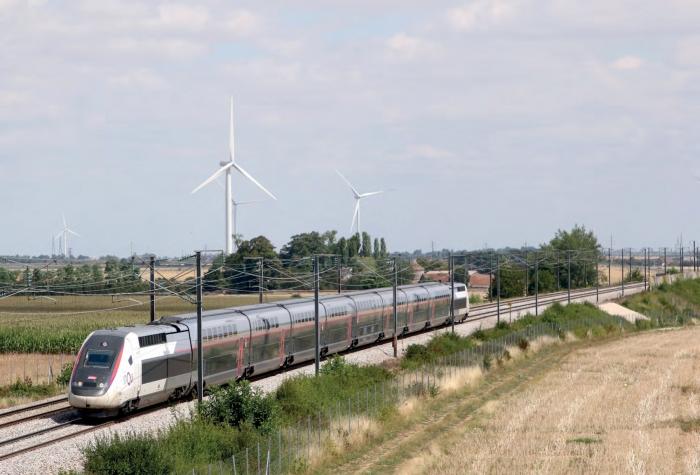
The tunnelled extension of Line U2 south from the existing Schottentor station north east of the new Rathaus interchange is under construction; this will eventually replace the existing U2 route for the Schottentor – Rathaus section but at a greater depth (up to 35 metres below the surface). Building deeper tunnels will allow the new U2 line to continue south to Matzleinsdorfer Platz without conflicting with the two other existing lines it will cross under en-route; new interchange stations are under construction connecting the new line to lines U3 and U4.
Tunnel boring machines are being used to build most of the new U2 line, with the TBMs heading north from Matzleinsdorfer Platz. ‘New Austrian Tunnelling’ methods (underground excavation secured by spray concrete) will be used for the Schottentor to Rathaus section from 2020 onwards. At the Rathaus station a major new interchange from the new U2 tunnels to the future U5 station (existing U2 ‘Rathaus’ station) is under construction. The extended U2 line is due to open in 2027, although delays issuing some construction contracts may delay this.
The other new line, U5, is largely a conversion of the existing four-station section of the U2 line between Karlsplatz and Rathaus (originally built as a tram tunnel in 1966 before conversion to metro in 1980) and a short entirely new section north west to Frankhplatz. However, planning is already underway to extend this line by four more stations to the north western suburbs. The U5 stations will feature full platform doors and the line will be fully automatic when it opens in 2025.
NEW AUTOMATIC TRAINS
Wiener Linien has ordered 34 six-car Type X metro EMUs from Siemens, which is building them at its Vienna factory. The contract, signed in 2017, includes an option for 11 more trains. The 80km/h 750V DC third rail Type X EMU utilises aluminium car bodies and will feature wooden seats – chosen by the public as more environmentally friendly than plastic as used in existing Vienna trains.
The new trains are designed for automatic operation on the new U5 line and manual operation elsewhere. The trains will operate only using electric braking, with up to 90% of all braking energy returned to the current supply; traditional air brakes will not be fitted. Wiener Linien will use the new fleet to partly replace its original Type U ‘Silberpfeil’ (Silver Arrow) fleet dating from the system’s opening in 1976 and also to provide additional trains to operate services on the two new sections of line.
Siemens has invested heavily in the Vienna plant and builds metro trains for multiple customers around the world there. Key areas for investment in recent years have been in aluminum car body fabrication and building a fully automated robotic paint shop, described by Siemens as the most advanced of its kind anywhere. Siemens will produce the first trains for its London Underground order in Vienna and the plant will supply components for the trains being assembled at the planned Goole factory in the UK.
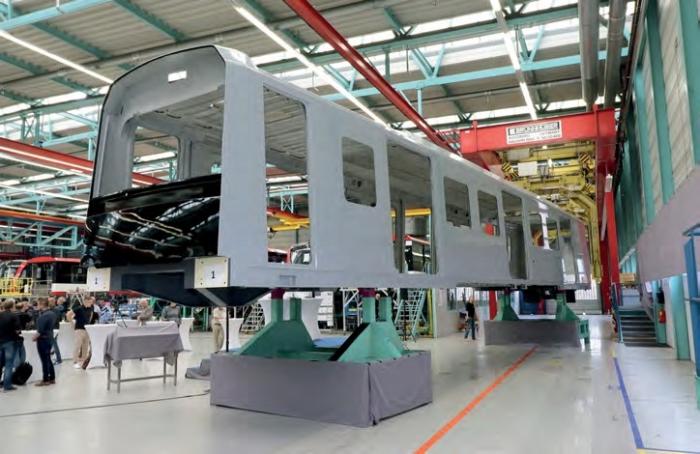
FRANCE

MORE TGV OCÉANE ORDERED
French Railways (SNCF) has announced an order for 12 more conventional double deck TGV Océane sets for use on services from Paris Est to Metz and Nancy on LGV Est Européenne as well as more for services from Paris Montparnasse to Nantes and Rennes/Brittany, despite having ordered 100 new generation ‘TGV of the Future’ Avelia Horizon trains from Alstom in mid-2018 for delivery between 2023 and 2033. The trains will be very similar to the first 55 ordered for Paris – Bordeaux/Toulouse services via LGV Sud Europe Atlantique in 2017 but will feature improved Wi-Fi and passenger information systems. Growing passenger traffic plus the desire to withdraw many older single deck TGVs soon explains why SNCF is spending €335 million on the order, which at under €28 million per train (with around 550 seats) is €3 million more per train than the ‘TGV of the Future’ Avelia Horizon trains will cost.
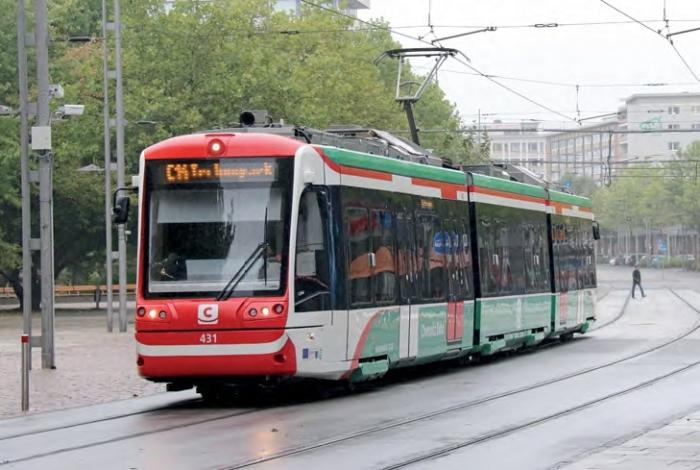
GERMANY

SAXON TRAM-TRAIN SUCCESS STORY
Passenger numbers have more than doubled on the new Chemnitz tram-train routes introduced from October 2016 thanks to the introduction of through ‘one seat ride’ services between several regional towns and the centre of Chemnitz. The tram-train services are operated by City Bahn Chemnitz (owned by several regional local governments) on behalf of mid-Saxon regional transport authority Verkehrsverbund Mittelsachsen (VMS) and use Stadler-built, VMS-owned electro-diesel (750V DC electric/diesel) ‘Citylink’ vehicles. These are similar to those supplied for the Sheffield – Rotherham tram-train trial, except that the UK vehicles are dual-voltage electric (750V DC/25kV AC) rather than bi-mode.
The introduction of through tram-train services to the city centre from 1 October 2016 on three existing regional rail routes that previously served only Chemnitz Hbf using DMUs has enabled passengers to avoid the need to transfer to a tram or walk over 1km to reach the city centre. Daily passenger numbers have more than doubled, with 5,300 daily passengers in 2018 instead of 2,500 in 2016 (up 112%). On some of the routes served the increase has been even greater, with the C14 Chemnitz – Mittweida route showing the highest growth (146%) from 650 to 1,600 daily passengers. Hourly services are offered on each of the three routes. Services were extended further into the city to use the new tram line to ‘Technopark’ from December 2017.
NETWORK EXTENSION UNDERWAY
From late 2020 the tram-train network will be expanded via the 47km-long railway line south of the city to and from Aue (via Thalheim). Tram-trains will access the line in the southern suburbs using the new tram line to ‘Technopark’ and a new connection to the main line network. Planning permission for the tram to rail connecting line was issued earlier this year, enabling construction to begin. VMS has ordered a further four Citylink light rail vehicles to operate services on the Thalheim/ Aue line, which will operate cross-city to connect to the existing Citylink operated routes. Further extensions to the network are being planned.
BENTHEIMER EISENBAHN REOPENS TO PASSENGERS
The 28km Bad Bentheim to Neuenhaus line in western Germany reopened for passenger services on 6 July. Services are operated by the line’s historic owner the Bentheimer Eisenbahn (which operated passenger services until 1974) using a fleet of five new Alstom Lint DMUs. The state of Lower Saxony funded 75% of the €21 million invested in upgrading infrastructure and stations.
IRELAND

NEW PLATFORM OPENS AT LIMERICK JUNCTION
The new 240-metre €3.5 million ‘down’ platform and a new footbridge with high capacity lifts at Limerick Junction station opened on 25 August. The opening of the platform will save an average of around three minutes for Dublin to Cork services as they will no longer be required to slow to cross over to the lengthy single platform on the up side previously used. The new platform will also improve punctuality by eliminating delays due to services being held waiting for paths to cross from one line to the other.
Whilst shaving minutes off the Dublin to Cork timetable, the new platform does mean passengers from Dublin for the Limerick Colbert shuttle service and Waterford trains have lost their cross-platform interchange and have to cross the footbridge. Tim Casterton
UNCERTAIN FUTURE FOR SOUTH WEXFORD LINE
The new Iarnród Éireann (IÉ) weed spray multi-purpose vehicle paid its first visit to the mothballed South Wexford line on 21 August, travelling to Waterford and returning to Rosslare five days later. The South Wexford line lost its remaining passenger services in 2010 and has been included in the weed spray campaign since then, however it appeared to have been dropped from the programme in 2019 with no spray working over it earlier in the year. Local politicians in the South Wexford area raised this matter with the National Transport Authority (NTA) and were advised the NTA ‘intend to review the arrangements with IÉ with the objective of establishing a suitable regime of long-term preservation that would apply to the line’.
The Barrow bridge on this line has recently been added to the National Trust of Ireland (An Taisce) ‘buildings at risk’ register. The bridge, designed by Benjamin Baker (who also designed the Forth bridge), is the longest railway bridge in Ireland at 650 metres long. Wexford County Council has appointed consultants to undertake advance studies for a 56km cycleway along the railway from Rosslare to Waterford City which would incorporate the bridge, despite IÉ having stated in its National Planning Framework response its wish to develop Rosslare Port for lo-lo traffic incorporating a rail freight terminal. Tim Casterton
MIDLETON 10TH ANNIVERSARY
In July the Cork to Midleton suburban line celebrated its 10th anniversary since reopening. During that time passenger numbers have grown every year, even during the economic recession. During 2018 a record 437,000 journeys were made on the line, with a further increase of almost 10% so far this year. The branch has 274 trains per week. Tim Casterton
ROMANIA

TURKISH MANUFACTURER TO SUPPLY TIMISOARA TRAMS
The western Romanian city of Timisoara has ordered 16 low-floor trams from Turkish manufacturer Bozankaya in a contract worth RON155.8 million (£30 million), beating Polish firm Pesa. The new trams will be delivered from 2020 and will be capable of catenary-free operation. The contract includes options for up to 24 more vehicles. Timisoara, like many Romanian cities, currently relies heavily on secondhand 1970s and 1980s trams from a variety of German systems.
SPAIN

GRANADA JOINS HIGH-SPEED NETWORK
After a construction period lasting more than a decade, the high-speed line linking Granada to the Spanish 1,435mm gauge high-speed network opened on 25 June. The 112km-long Granada high-speed branch, which has been partially built on the trackbed of the existing 1,668mm gauge line (which still exists, also rebuilt, albeit partially on different alignments), connects at the western end with the Malaga – Seville – Madrid high-speed route. Exact construction costs have not been revealed, although they exceed €500 million. Long-distance services between Madrid and Granada were suspended due to construction in 2015 and after largescale protest only reintroduced two years later using, for a short period, diesel loco-hauled Talgo sets via the old classic route.
The new high-speed line is not being intensively used, with just three daily AVE train pairs from Madrid to Granada, taking 3hr 5min, and one train pair daily to Barcelona (which uses the high-speed connecting line just south of Madrid), taking 6hr 20min each way.
SWITZERLAND

SBB AND BLS AGREE SHARING OF LONG-DISTANCE SERVICES
In late August Swiss national operator SBB and the country’s second biggest operator BLS (Bern–Lötschberg–Simplon AG) reached agreement after a long-running legal dispute on future co-operation operating the Swiss long-distance passenger concession. Both companies are wholly or partly government owned, SBB entirely by the Swiss Confederation and BLS majority owned by the Bern Cantonal government plus the Swiss Confederation, although there are other shareholders.
In June 2018 the Swiss Federal Transport Office announced it was splitting the concession to operate long-distance passenger services from the December 2019 timetable change, awarding almost all services to SBB (as now) but also awarding BLS the concession for two routes from Bern to Biel and Bern to Olten (via Burgdorf). As part of the decision the future concession was limited to 10 years to enable further changes from 2029.
SBB responded by immediately challenging the Transport Office’s decision in the Federal Administrative Court, arguing that the Federal Transport Office didn’t have the legal powers to change its concession and that the decision taken had failed to account for potential long-term effects. SBB clearly could foresee, and told local media so, that the national long-distance concession could be sliced up among multiple operators longer term, potentially with SBB left only with those routes other operators did not want.
After months of inconclusive legal action SBB agreed to talks with BLS this summer, mediated by the Swiss Government, and these resulted in an agreement whereby BLS will operate the routes it was awarded with its own trains and personnel but as a partner of SBB and using SBB’s operating rights. In this way, SBB will retain the sole national long-distance operating licence and BLS has effectively agreed to waive the 10-year concession it had been awarded. BLS will take over Bern to Biel services in December and those from Bern to Olten (via Burgdorf) a year later.
The new concession starting in December also includes new long-distance services via the classic Gotthard mountain route operated by Südostbahn. SBB had not objected to the award of these services as it had no intention of operating them in the first place, having downgraded services on the classic route between Erstfeld and Bellinzona to an hourly stopping service following the opening of the Gotthard Base Tunnel.
STADLER WINS BERN TRAM ORDER
Stadler will supply up to 50 of its ‘Tramlink’ vehicles to the Swiss capital’s public transport operator Bernmobil, having won a tender in which both CAF and Siemens participated. The initial order for 27 five-section vehicles (20 bi-directional, seven single-ended) is worth CHF125 million (£105 million). The new trams will be delivered between 2023 and 2025. The majority of the new 42.5-metre-long vehicles will replace older trams, although six are specifically designed for use on the city’s Line 9, which is being extended.
Future orders to cater for further network extensions or service frequency improvements can be placed until 2027.
TURKEY

TURKISH OPEN ACCESS OPERATOR EXPANDS FLEET
Turkish open access freight operator Körfez Ulaştırma, which is the rail freight subsidiary of Turkey’s largest oil refinery Tüpraş (Türkiye Petrol Rafinerileri A.Ş.), has ordered seven EuroDual Co-Co electro-diesel (6.15MW 25kV AC electric/2.8MW diesel) locos from Stadler. The locos will be built in Valencia and delivered in 2021, and Stadler will maintain them in Turkey. Körfez Ulaştırma started operations in December 2017 and has a fleet of 439 wagons used to move oil products within Turkey.
In the summer of 2019 Körfez Ulaştırma took delivery of all five DE36500 Wabtec (formerly GE Transportation) ‘Powerhaul’ locos, ordered in 2018, which were assembled by Wabtec’s Turkish partner Tülomsaş in Eskişehir. The new locos will be used alongside five similar DE36000 locos leased from Turkish State Railways (TCDD) to operate 2,000-tonne oil trains.
